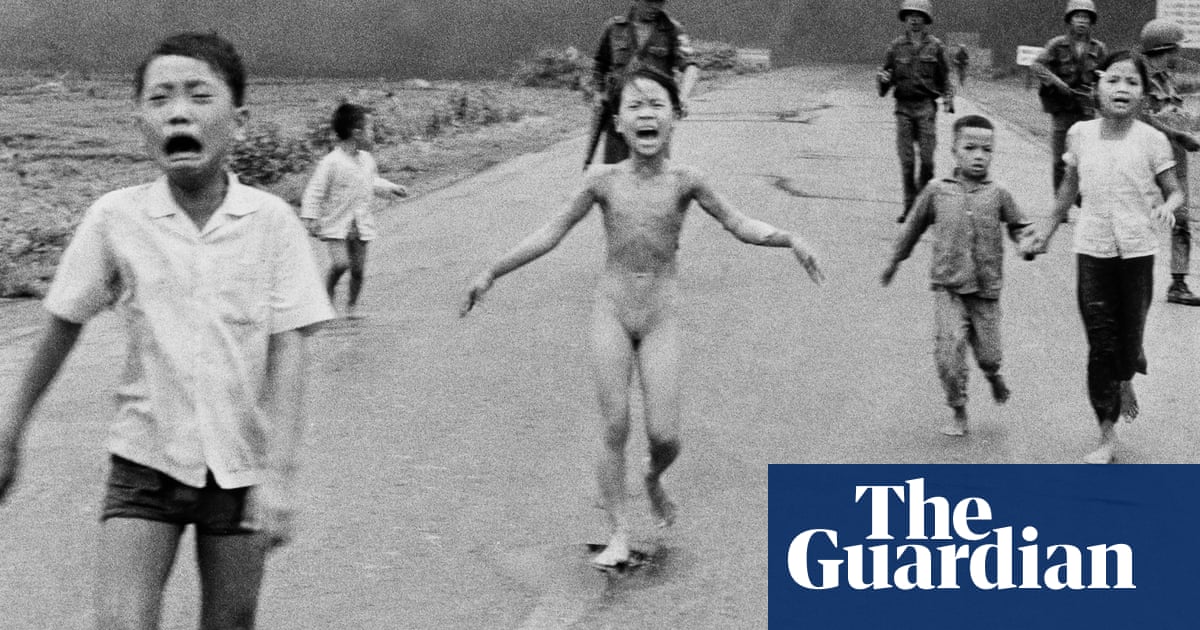The World Press Photo group has suspended the attribution of authorship for one on the most famous press photographs ever taken, aftera new documentarychallenged 50 years of accepted journalism history.
The photo, officially titled The Terror of War but colloquially known as Napalm Girl, remains one of the most indelible images of the US war inVietnam. Since its publication in June 1972, it has been officially attributed to Nick Ut, a Vietnamese photographer working with the Associated Press in Saigon.
The AP and Ut have long maintained that Ut, then 21 years old, took the photo, which went on to win the World Press Photo of the Year award in 1973 and established Ut as a venerable photojournalist.
But a recent documentary challenged that history, instead proposing that the photo, which depicts a naked nine-year-old girl named Phan Thi Kim Phuc as she flees a napalm attack in the South Vietnamese village of Trảng Bàng, was taken by a man named Nguyen Thành Nghe.The Stringer, which premiered at the Sundance film festival in January, claimed that Nghe, a driver for NBC who sold photos to the AP as a freelancer, was denied credit in favor of Ut because he was not AP staff.
The film prompted “deep reflection” at World Press Photo, which conducted its own investigation, the results of which were made public on Friday 16 May. The in-house analysis, conducted between January and May 2025, concluded “based on analysis of location, distance, and the camera used on that day” that “photographers Nguyễn Thành Nghệ or Huỳnh Công Phúc may have been better positioned to take the photograph than Nick Út.”
The suspension only applies to the photo’s authorship, and does not rescind the 1973 Photo of the Year award. “The photograph itself remains undisputed,” the group said, “and the World Press Photo award for this significant photo of a major moment in 20th century history remains a fact.”
“Based on these findings and according to our values of accuracy, trustworthiness and diversity, we draw conclusions with regards to attribution,” Joumana El Zein Khoury, the group’s executive director, said in a press release. “It is important to state that the picture itself is undisputed and it is without question that this photograph represents a real moment in history that continues to reverberate in Vietnam, the United States, and globally.”
Earlier this month, the Associated Pressannouncedthat it found “no definitive evidence” to warrant changing the photo’s authorship, and released a96-page reporton the matter – itssecond in four months– based on its own internal investigation. The AP concluded that it was “possible” Ut took the photo, and found no evidence that Nguyen took it instead. The matter was unable to be proven conclusively, it added, due to the passage of time, the absence of key evidence, the limitations of technology and the deaths of several key people involved.
“We left nothing uncovered that we’re aware of and we’ve done it with a great deal of respect to everybody involved,” said Derl McCrudden, an AP vice-president of global news production, in a statement. “It makes no difference to us if we changed the credit, but it has to be based on facts and evidence. And there is no definitive evidence proving that Nick Ut did not take this picture.”
The Stringer, directed by Bao Nguyen, enlisted several witnesses to argue that Nghe sold the photo to the Saigon bureau photo chief, Horst Faas, for $20 and a print, including Nghe’s brother, who claims he brought the film to the AP; Nghe’s daughter Jannie; Carl Robinson, a longtime AP photo editor in Saigon who first contacted the film-makers; and several of Robinson’s former photojournalist colleagues. The investigators also consulted forensic experts with the French NGOIndex, who found it “highly unlikely” that Ut took the photo based on the other images AP credited to him that day.
The AP conducted its own forensic investigation involving further interviews, the examination of cameras and surviving negatives from that day, and a 3D model of the scene. The resulting report revealed “inconsistencies on both sides” but concluded that buying Nghe’s story would “require several leaps of faith”, such as believing that the only time he sold photos to a western news agency, it turned out to be one of the most famous images of the 20th century.
Nghe, who made a surprise appearance at the Stringer’s Sundance premiere, confirms his account in the film. Ut, meanwhile, continues to maintain his authorship, and told the AP that the dispute “has been very difficult for me and has caused great pain”.
But for World Press Photo, the official author is now: unknown. “This remains contested history, and it is possible that the author of the photograph will never be fully confirmed,” the group said. “The suspension of the authorship attribution stands unless it is proved otherwise.”
